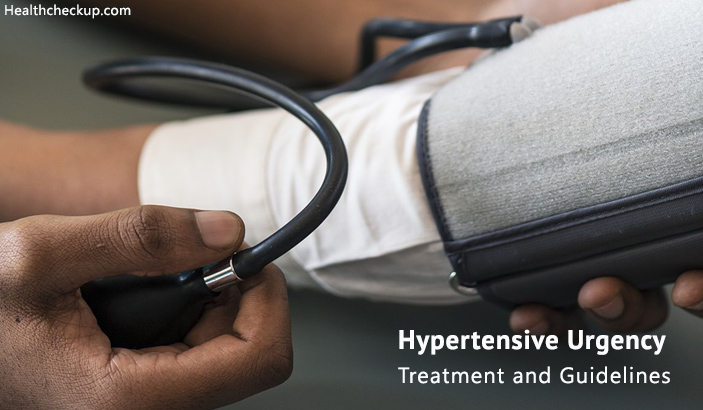Hypertensive urgency treatment involves bringing down blood pressure with the use of drugs. Hypertensive urgency treatment varies considerably because of lack of facts supporting the use of a particular therapeutic agent over the other. Your primary health provider is able to distinguish the treatment that you ought to get.
What Is Hypertensive Urgency?
Hypertensive urgency is categorized as one part of hypertensive crisis conditions. It is defined as an acute severe uncontrolled hypertension that does not result in organ damage. Hypertensive urgency condition occurs when blood pressure spikes and reading are 180/110 and higher.
Hypertensive Urgency Causes
There are several causes of the hypertensive urgency. The most common cause of hypertensive urgency is heart failure. Hypertensive urgency can also be caused by kidney failure. If you forget to take your blood pressure medication, hypertensive urgency may be triggered. Interactions between medications may also trigger hypertensive urgency.
Conditions such as stroke may also cause hypertensive urgency. Heart attack conditions could also lead to the development of hypertensive urgency. Rapture of the aorta as the main artery is also known to cause hypertensive urgency. Eclampsia or convulsions during pregnancies are also suspected to lead to the urgency in some cases.
Symptoms of Hypertensive Urgency
Some symptoms of hypertensive urgency are life threatening. These may include unresponsiveness, shortness of breath and seizures. Other life threatening hypertensive urgency symptoms include severe chest pains, severe anxiety, nausea and vomiting.
You may also experience severe headaches that are accompanied by confusion and blurred vision. You will also have nosebleeds, general weakness of the body, dizziness, thinking problems, problems with sleeping and overall behaviour change.
If you experience any of these symptoms and have a severe increase in blood pressure then you need to seek immediate medical attention.
Hypertensive Urgency Treatment Guidelines
The treatment and management of hypertensive urgency follow guidelines that are established by health care providers and regulatory authorities. Your primary healthcare provider will first ask you about your medical history. You will be asked whether you have other conditions such as heart disease, high blood pressure and diabetes. Your healthcare provider will also review your medications, check your heart, check your kidney and also check on your brain functions. Common causative factors for hypertensive urgencies are.
a. Hypertensive Encephalopathy
A hypertensive encephalopathy checkup will inform your health care provider adequately on the guidelines to use for your treatment. According to the Universal Established Guidelines, if a patient has Hypertensive Encephalopathy then it means that the targeted blood pressure is lowered by a maximum of twenty percent. If blood pressure is 100-110 mmHg within the first hour then there is a gradual reduction in BP to normal range over the next 48-72 hours. Labetalol drug administered via intravenous infusion is the drug of choice for hypertensive crisis.
b. Ischemic Stroke
If your hypertensive urgency causes ischemic stroke, it means you may have Thrombolysis. Thrombolysis is considered only if the BP is greater than 185/110 mmHg. During thrombolysis, blood pressure is monitored after 15 minutes during treatment. Blood pressure is also checked after two hours and then after 30 minutes for six hours. The drug of choice for an Ischemic stroke is Labetalol bolus. Nitroprusside intravenous infusion is administered if blood pressure is not controlled by Labetalol bolus.
c. Aortic Dissection
If your hypertensive urgency has resulted to aortic dissection it means your blood pressure is 100-120 mmHg. The drug of choice for this hypertensive urgency situation is Labetalol intravenous infusion, IV-intermittent, Metoprolol and Nitroprusside intravenous infusion. Your Beta-blockades must be established before introducing vasodilators.
d. Left Ventricular Failure
Hypertensive urgency may be caused by the left ventricular failure. When there is left ventricular failure then it means that your Mean Arterial Pressure (MAP) is lowered by 20-25 percent. The blood pressure readings are 60-100 mmHg. Symptomatic improvements are also noticed. The drug for choice includes nitroglycerin intravenous infusion, Enalaprilat IV-intermittent and Nitropusside intravenous infusion.
e. Post Operative Hypertension
Postoperative hypertension is also considered hypertension urgency. When you have postoperative hypertension, your Mean Arterial Pressure is lower by 20-25 percent. The blood pressure is less than 180/110. The drug of choice when you have postoperative hypertension is Labetalol intravenous bolus and infusion. Your medical care provider could decide to us Esmolol intravenous bolus and infusion as an alternative.
Hypertensive Urgency Treatment
Hypertensive urgency treatment begins with diagnostic tests. Tests that you will be subjected to include blood tests, the urine tests, chest x-rays, an EKG and a CT-scan. Hypertensive urgency is commonly treated with diuretics and blood pressure medications. So as to prevent other hypertensive crisis occurrences, it is important to manage other health conditions.
Your healthcare providers will advise you on how to manage your heart disease and diabetes. It is also important to take your blood pressure medication regularly. Your doctor will recommend that you eat a healthy diet, lose weight, limit your toxic intakes such as alcohol and smoking, and have a regular exercise schedule.
Your health care provider makes the decision whether your hypertensive urgency treatment would involve being hospitalized or treated on outpatient basis. When you are having a hypertensive crisis treated, your blood pressure can be brought down within a few hours of medication.
Medically Reviewed By

Professionally, a trained Microbiologist and Plant operator, Eustace is an experienced health content writer who is passionate about helping people lead a healthy life.








